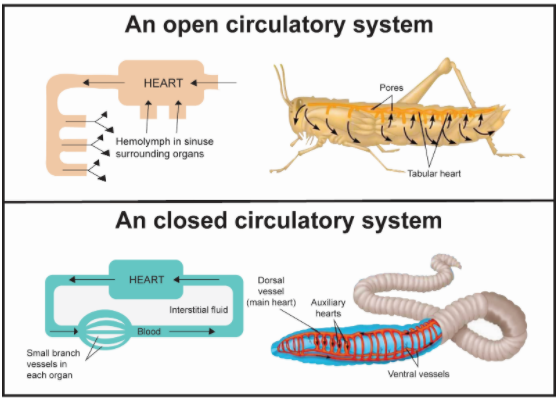Question
Question: In the course of evolution, a heart for pumping blood was first found in which of these? (a)Anneli...
In the course of evolution, a heart for pumping blood was first found in which of these?
(a)Annelids
(b) Roundworms
(c)Arthropods
(d)Flatworms
Solution
Heart for plumbing blood was first known to have appeared in segmented worms. For example, Earthworms have small muscular areas that contract and pump blood throughout the earthworm body. Researchers state that in the course of evolution heart pumping first appeared in animals with a closed circulatory system.
Complete answer:
One of the simplest types of closed circulatory systems is found in annelids such as the earthworm. The earthworm, which is perhaps the most common of all the annelids, has five heart-like structures called aortic arches. Earthworms have two main blood vessels; a dorsal and a ventral vessel, which carry blood towards the head and the tail respectively. Blood is moved along the dorsal vessel by waves of contraction in the wall of the vessel. The circulatory patterns are of two types open or closed. The open circulatory system is present in arthropods and molluscs in which blood pumped by the heart passes through large vessels into open spaces or body cavities called sinuses. Annelids and chordates have a closed circulatory system, in which the blood pumped by the heart is always circulated through a closed network of blood vessels. This pattern is considered to be more advantageous as the flow of fluid can be more precisely regulated.
Additional Information: -The evolution of the heart has enabled oxygen and nutrients to be pumped efficiently to body tissues, enabling the oxygen greedy brain.
-Invertebrate animals have a simple circulatory system, as opposed to a heart. Many do not even have blood, but rather are filled with fluids that receive its nutrients through body cells.
- More complex invertebrates use an open circulatory system, which has a few if any blood vessels. A pumping mechanism.
-For example, earthworms have small muscular areas that contract and pump blood throughout the earthworm's body.
So, the correct answer is 'Annelids'.
Note: -The origins of the heart pump are believed to have started with the pumping of a jellyfish.
-Circulatory systems are highly varied. In diploblastic, they involve the circulation of seawater into a body cavity that is open to the environment.
-In trophoblasts, however, circulatory fluid is an internal, extracellular, aqueous medium produced by the animal and distributed either through body cavities or through integrated networks of vessels, sinuses, and pumping organs.

